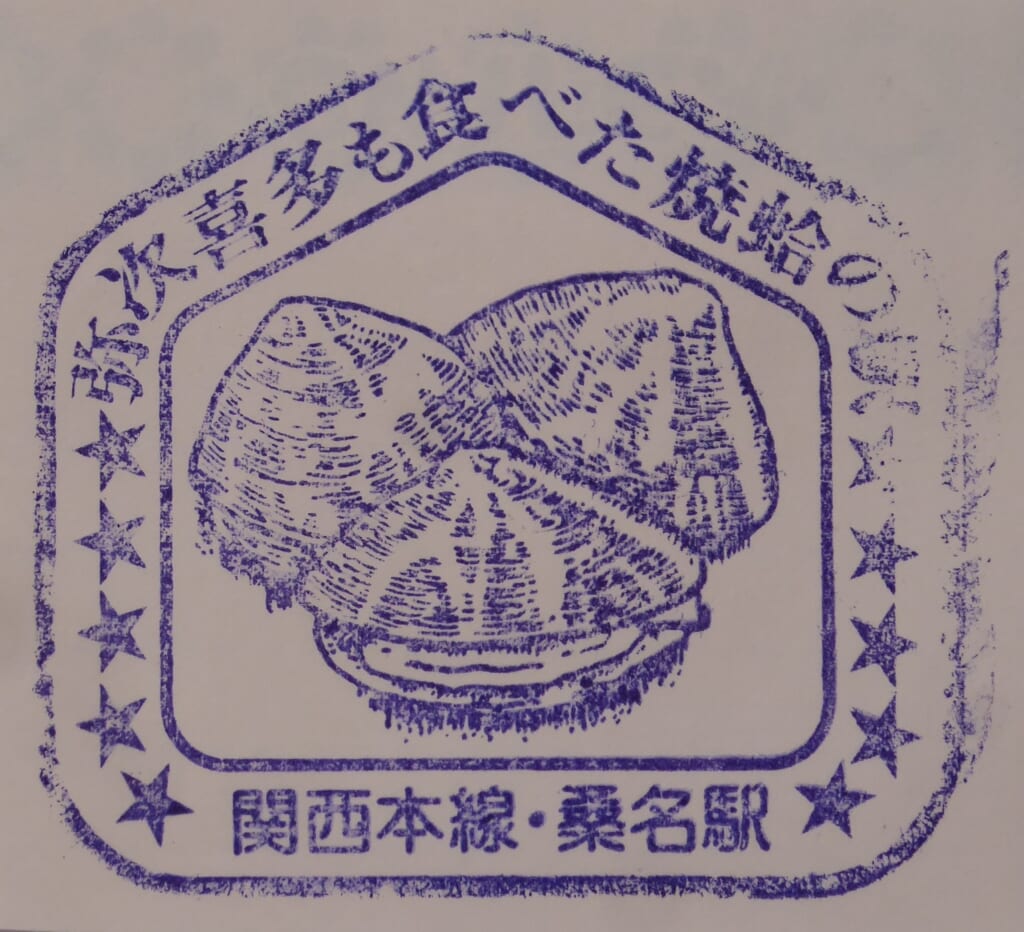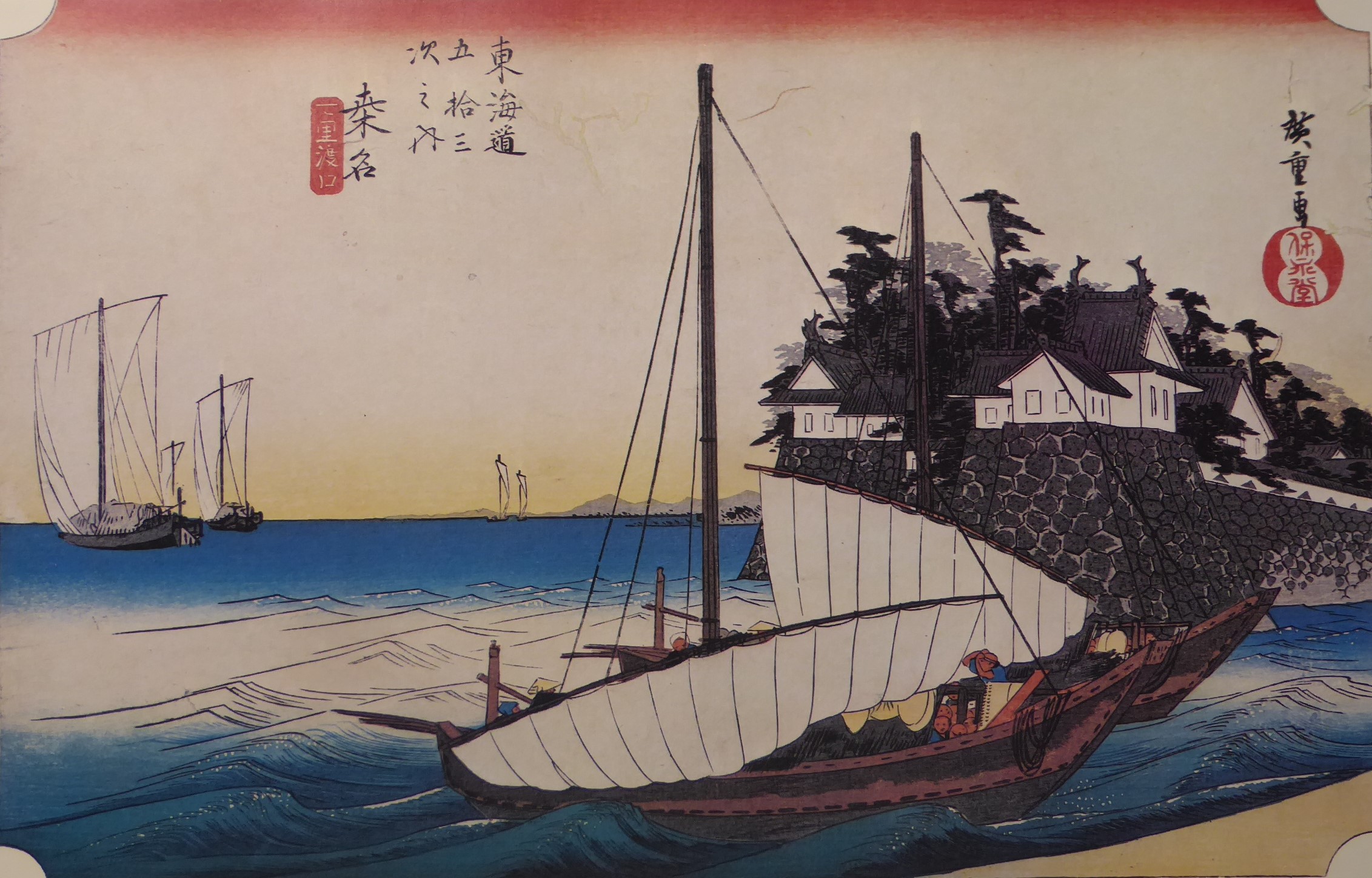Explanation of the Fifty-three Stations of the Tokaido 43 Kuwana
12.7km from Yokkaichi to Kuwana, 35°07′13″N 136°54′25″E
Kuwana is the 42nd station on the Fifty-three Stations of the Tokaido.
It is now Kuwana City, Mie Prefecture.
The side road Saya Kaido branched off from here.
It was the castle town of the Kuwana Domain, where the Honda family, one of the four great Tokugawa generals, and the Matsudaira family daimyo served as feudal lords.
In the late Edo period, there were two honjin, four wakihonjin, and 120 inns. The total number of houses was 2,544, and the population was 8,848.
On the Tokaido, it was the second largest inn after Miyajuku in terms of the number of inns.
Miyajuku was connected to the Shichiri-no-Watashi Ferry, the only sea route on the Tokaido, and served as the gateway to Ise Province and pilgrimages to Ise.
During the Edo period, the post town was located along the Ibi River.
Kansai Railway Kuwana Station was established on the west side of the post town. As a result, the city center moved westward.
A rice market was opened in the castle town in the late 18th century with permission from the shogunate, and it became a thriving commercial area that influenced the prices in Edo and Osaka.
Kuwana was the easternmost post town in the Keihan-style language district on the Tokaido.
Shichiri-no-Watashi Ferry was the only sea route on the Tokaido.
It was connected to Miyajuku by sea, a distance of 28 km.
The journey took about four hours.
At the site of the Shichiri-no-Watashi Ferry wharf, there is the first torii gate, which was used for distant worship of Ise Grand Shrine.
This torii gate was erected during the Tenmei era of the Edo period by Yata Jinemon and Otsuka Yorokuro, who advocated for its construction in various parts of the Kanto region.
The specialty clams were eaten either grilled or boiled.
The grilled clams were mainly served to travelers, while the boiled clams were sold as souvenirs.
This clam dish was from the Kuwana domain during the Edo period, and was called “Kuwana grilled clams” because it was under the domain’s control.
Tomita grilled clams, which were popular during the Edo period, are no longer available in the Tomita area today.
① “Hoeido version”
This depicts the crossing at Kuwana Port.
You can see the tower of Kuwana Castle jutting out into the sea.
The two passenger ships are full to capacity.
They have furled their white sails and are about to dock on the land you can see in the lower right.
There were 75 shared boats of three types in service. The three types were shared boats carrying 40, 47, and 53 people.
This large ship depicts the important port at the mouth of the Kiso River.
The vertical line of the ship’s mast, the horizon, and the horizontal line of the castle’s stone walls form the axis.
A ship rocking on the waves is depicted in the foreground, while the orderly sea and sturdy castle are depicted in the background.
The overall composition is well-balanced.
② “Gyousyo version”
This is the same composition as the Hoeido version.
The crossing at Kuwana Port is easy to see.
The torii gates are clearly depicted.
The presence of the numerous shared boats indicates that they were waiting.
③”Reisyo version”
A shared boat is depicted on the sea.
It is difficult to see the side view of the shared boat in the Hoeido version and the running script version.
The structure of the shared boat and the traveler’s journey are vividly depicted.
The momentum of the boat moving forward with its white sails is refreshing.
④ “Hokusai version”
Travelers waiting for Kuwana’s grilled clams to cook.
The image shows the clams grilling under the eaves of a clam teahouse, fanning the charcoal in a brazier.
⑤ “Travel image”
A stone monument at Shichiri-no-Watashi Ferry.
⑥ “Stamp image”
A stamp from JR Kuwana Station.
Hoeido version
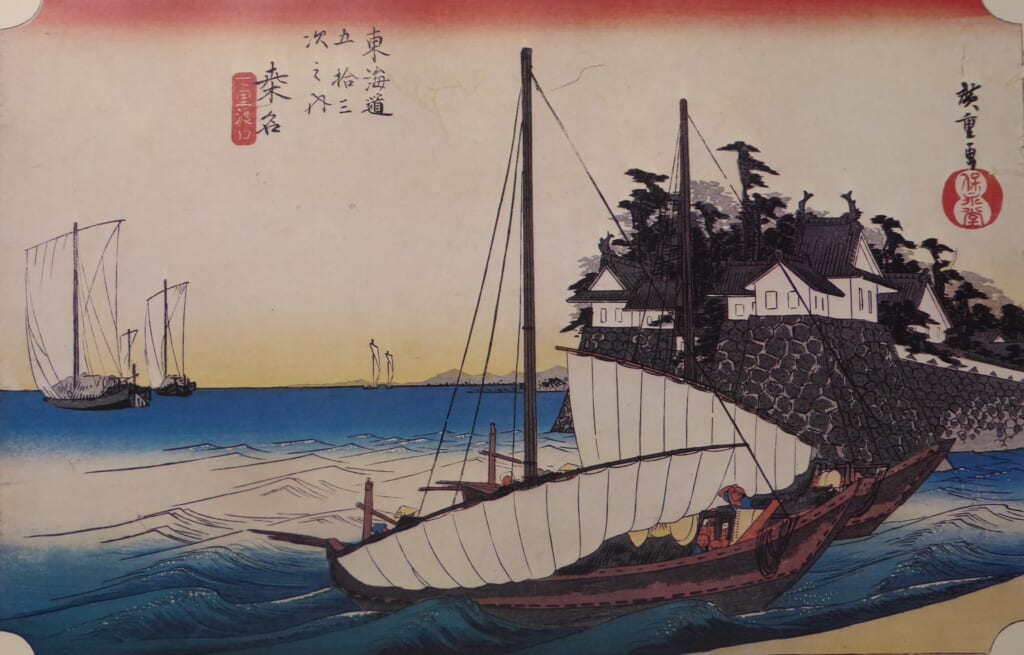
Gyousyo version
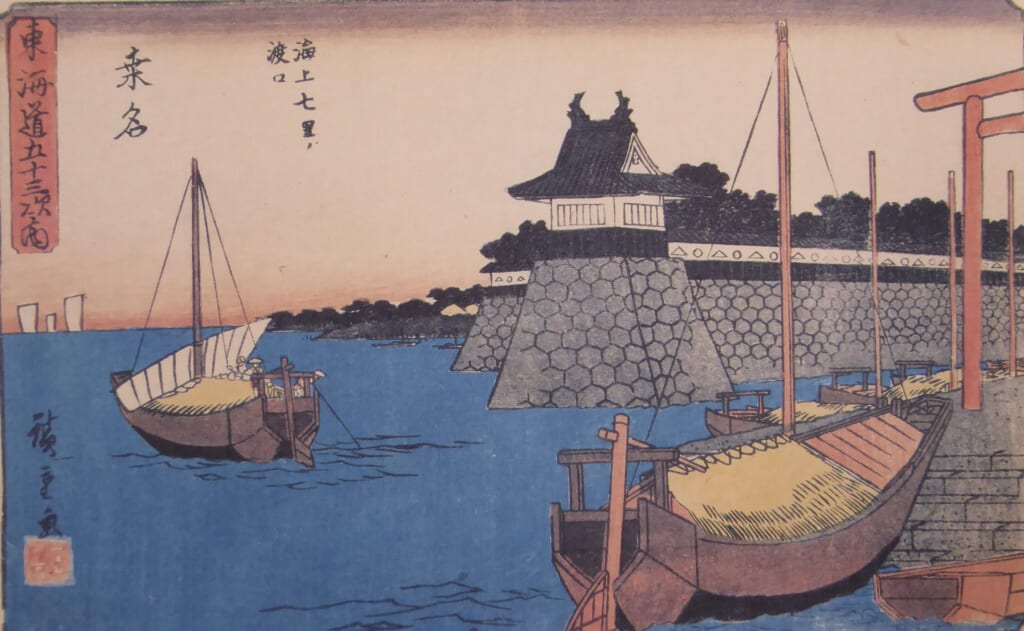
Reisyo version
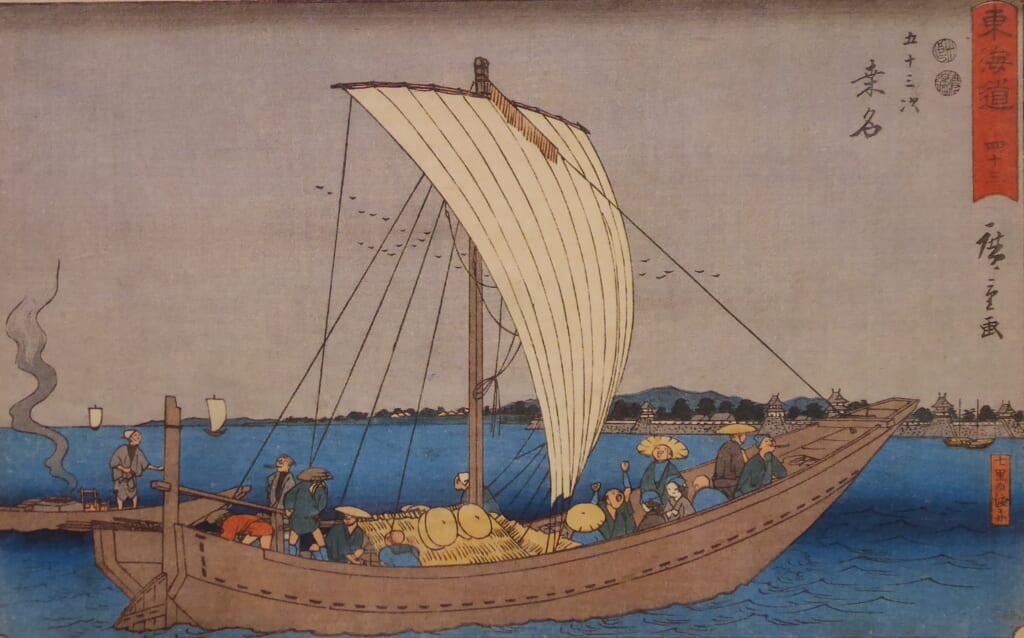
Hokusai version
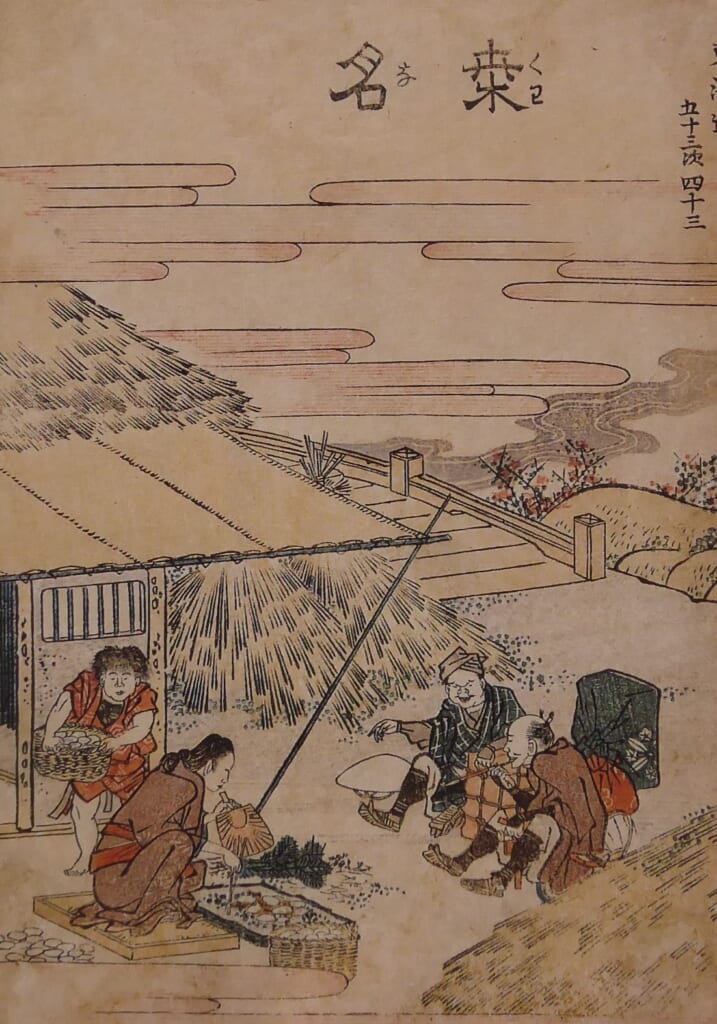
Travel image
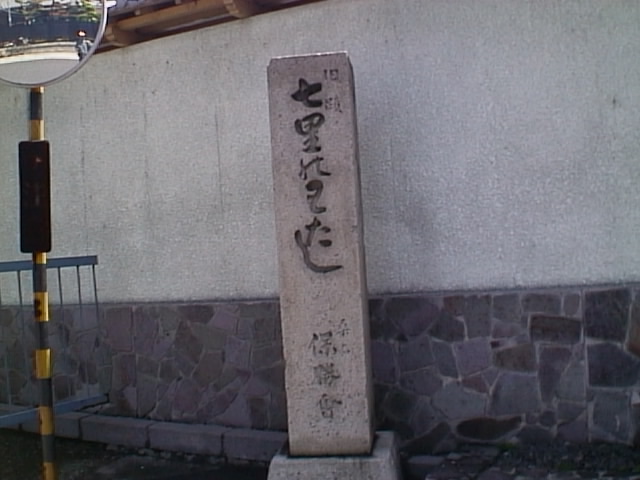
Stamp image
